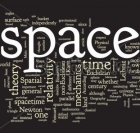Post Overview
-
Text Post
1 year ago+1 1 0A Developer’s Guide to Effectively Localize a Video Game
You have spent restless nights sketching out game concepts and bringing your innovative game idea to life. Your game studio has released its official version after the alpha and beta phases to let the world experience it. Despite all these efforts, your game isn’t reachable for the global gaming community owing to linguistic roadblocks. What will you do at that point? You feel helpless as your efforts aren’t generating expected results. Well, this is where your gaming studio needs to prioritize localization strategies to globalize your game reach and serve a wider community. Video game localization goes beyond mere translation to resonate with a wider audience.
Getting Started With Localization
Undoubtedly, localization is the most reliable solution to take your gaming project to new heights. Yet, it includes several technical complexities that can make the process even more complicated. This is where you need to take assistance from professional translators to refine the process and ensure flawless results. Game translation services consider cultural nuances, social norms, and technical aspects, ensuring your gaming project resonates effectively with a wider audience.
Identify Target Markets
Localization starts with identifying your target audience. Whom do you want to target? What are the demographics of your audience? Is your selected market worth the localization process? Many other queries can be addressed if you identify the right market for your gaming project. To start the hunting process, research markets with huge potential for your gaming genre. Another approach is to evaluate your platform’s digital analytics to track your international traffic and localize your game in their native language. Furthermore, you can consider factors like user demographics, internet penetration, and gaming trends in this specific region. These hunting strategies will provide you with valuable statistics that will help you select the most appropriate market and expand seamlessly.
Choose Language Strategically
Market research isn’t a process of just finding a new target market. A country or region can have multiple languages. The localization process starts when you choose the right language pair for a seamless transition. For instance, Hong Kong is a region where a huge population speaks English and Chinese. To capture the entire market, you need to translate your gaming project into both languages. Relying on a common language won’t work anymore. It's your call to prioritize languages for a strategic market expansion. If you believe the Chinese audience covers a wider section, you can start with Chinese and in the second phase of localization, translate your game into English.
Pay Specific Attention to User Interface and Design
The success of a video game hinges on the responsiveness of its user interface and design. A highly intuitive design captures more gamers and immerses them for a longer time. Furthermore, the user interface paves the way for seamless expansion, engaging more users and entertaining them with captivating visuals and graphics. But when it comes to localizing your game’s UI design and interface, many individual translators struggle to sustain the same style, intent, and pattern of your project. This creates several errors that limit the responsiveness of your project. A confusing design frustrates gamers and they ultimately decide to switch to other games for seamless immersion. This is where a qualified translation agency can do the magic to overcome barriers and enhance the responsiveness of your design.
Cultural Nuances
When it comes to video games, we don’t talk about translation. Instead, our focus becomes effective localization to align with the cultural nuances of your target audience and retain the same intent across different languages. Humor, idioms, and references vary from language to language. A compelling tagline or quote that fits your local language may deliver a different message when translated directly. On the other hand, localization tracks the background of your message to retain the same tone and context.
Voiceovers and Sound Effects
Imagine you played a game ten years ago. If we play its background music or other sounds, we’re sure you will be able to identify the game as a lot of memories get associated with unique game sounds. This is just one prime example of how a compelling gaming project leaves a lasting impression. Moreover, it emphasizes preparing high-quality voice overs and sound effects for a memorable gaming experience. As a developer, you should prioritize localization of voiceovers and sound effects when targeting a wider audience. Video game translation services cover each aspect of your gaming project be it user interface, design, or voice overs so you can emerge as a global brand in the gaming industry.
Final Words
Video game localization is gaining traction as fierce competition is expected in the coming years. Game developers are focusing on launching more unique games to engage gamers globally. However, your gaming project cannot make a successful global launch without effective localization strategies. These strategies fuel growth in the international market and make your project more immersive and accessible.
show more




















